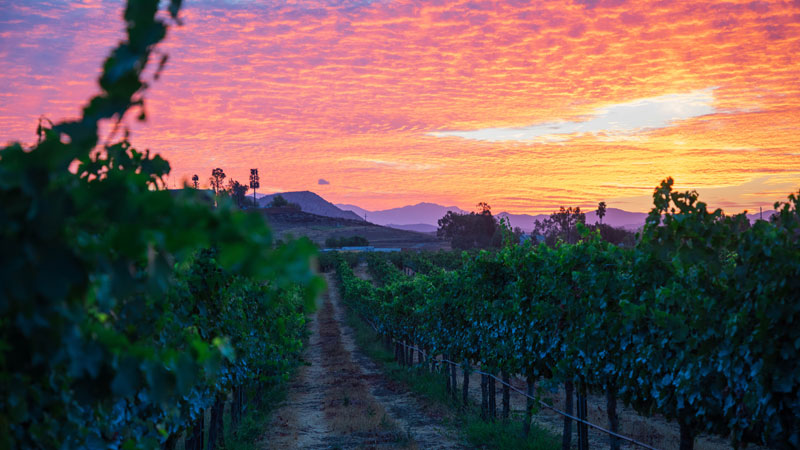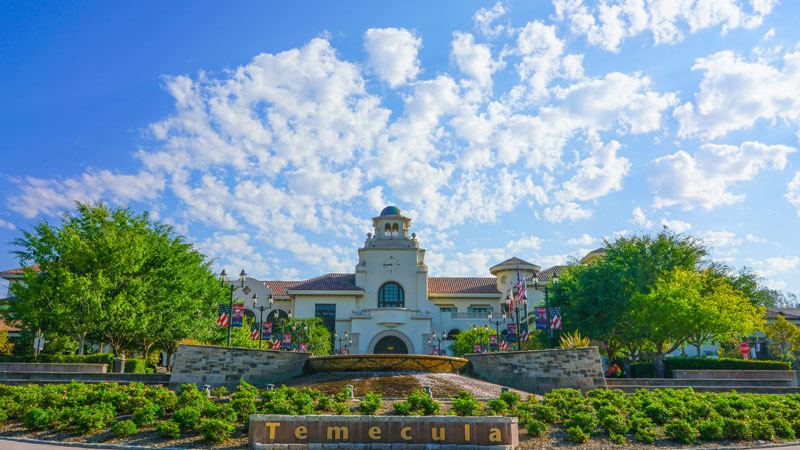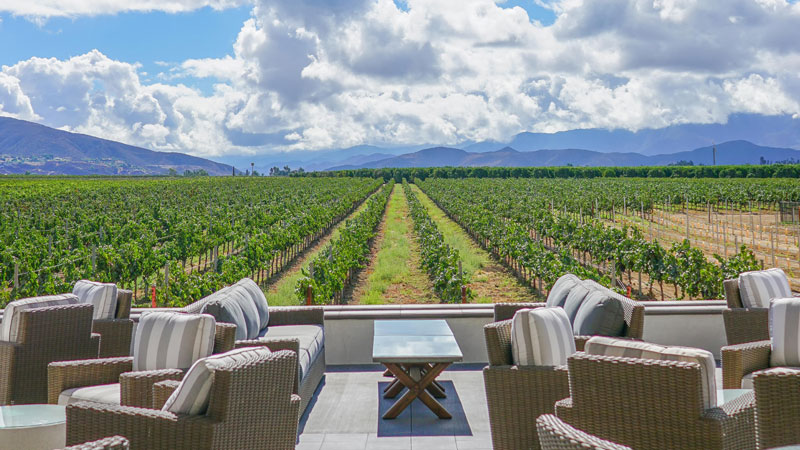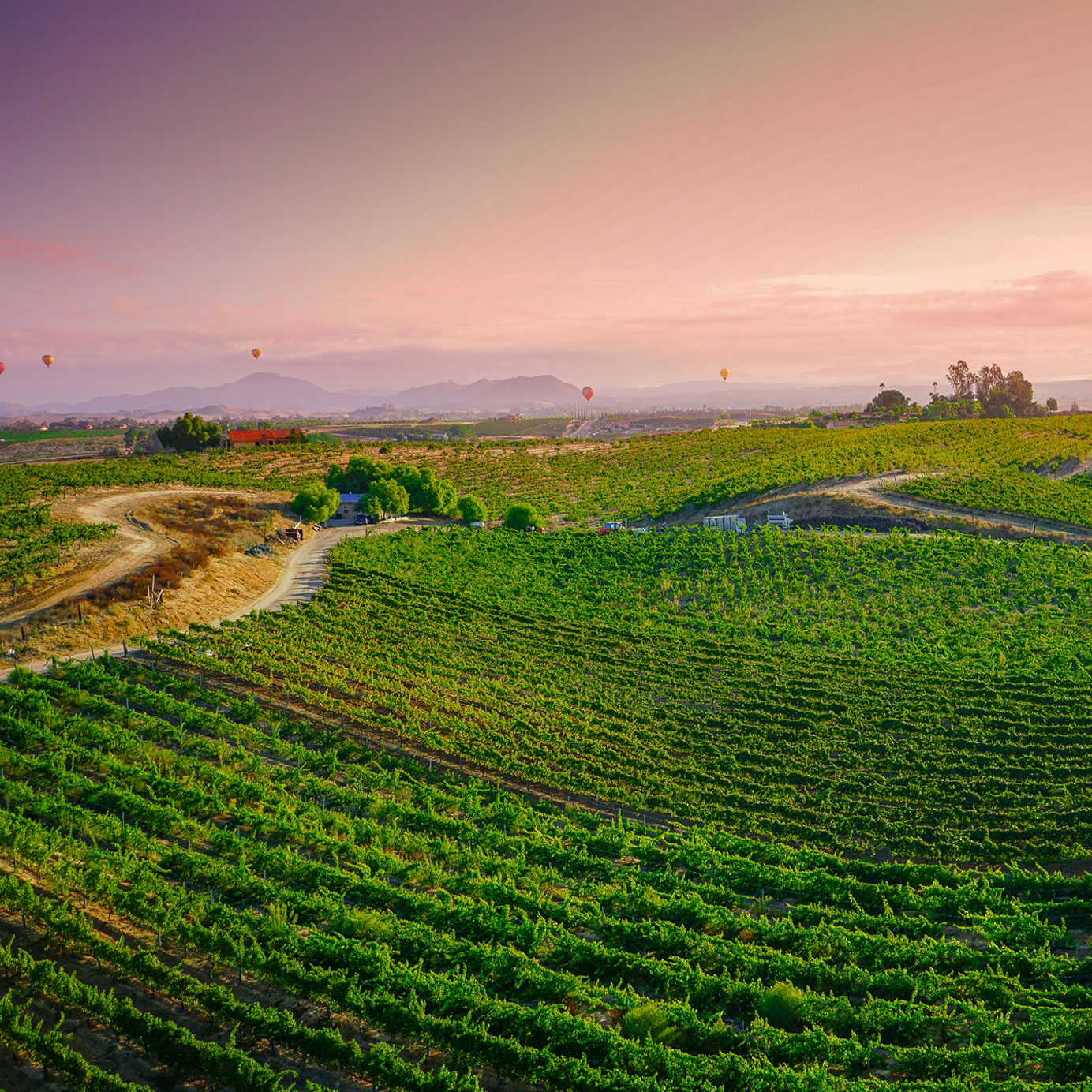If someone you knew were planning a trip to California wine country in previous years, it meant they were going to Napa or Sonoma (or, perhaps, both). Now, a new generation of winemakers in a small patch of Southern California real estate is looking to change that.
Temecula Valley lies in the southeast corner of Riverside County, less than an hour north of San Diego. It is home to 40 wineries and a Mediterranean climate. Thanks to the gap between the coastal California mountains and the high rises separating Temecula from eastern deserts, the area gets long sunny days, breezy afternoons, and cool nights.
“We have a perfect climate for growing high-quality grapes and making high-quality wine,” Devin Parr, brand marketing partner for the Temecula Valley Winemakers Association, says. “Most people don’t realize it… They think Temecula Valley is going to be too hot.”
That misperception is one of many that surround Temecula’s wine community. Many winemakers here feel that long-haul travelers and national media are biased against Southern California as a viable wine destination.
“It’s recognition that we’re looking for,” Jon McPherson, master winemaker, South Coast, says. Right now, most wine media “won’t go south of Santa Barbara,” he says.
And so we are exploring Temecula Valley, the California wine region no one should overlook.

Climate And Community
Outsiders may think of Southern California as the land of surf and sunshine, but the weather in Temecula mirrors the Rhône Valley, certain parts of Tuscany, and southern Italy.
“We have sandy loam soil, a lot of decomposing granite,” Parr says, “which your vines kind of want. [They want] to struggle a little bit. They don’t want to be bombarded with water so they want to be in well-draining soil so that they can dig deep and find all these nutrients deeper and deeper in the soil.”
Parr believes the success of Temecula Valley wines is due to equal parts climate, competence, and community.
“One of the things is the level of collaboration as far as rising tide lifts all boats,” Jim Hart of Hart Family Wines, says. “Everyone helps one another here, and that’s unique. You don’t see the level of collaboration and camaraderie in other wine regions.”
There’s incentive for every winery to make good wine, and not for one winery to stand out among the mediocre. And so it’s incumbent on the old guard and newcomers to learn from one another.
“There are the pioneers that are still here dropping wisdom,” Damien Doffo, CEO of Doffo Winery, says. “They’re very approachable. The sentiment within the community is great. There’s a big focus to continue to develop better wines. There’s a core group of people really trying to elevate the game.”
That sense of community is also attracting winemaking talent who, in previous years, might have carved out careers elsewhere.
“We get together, taste each others wines. It’s all because we want everyone to improve year after year,” Olivia Bue, winemaker, Robert Renzoni, says. Bue is one of the region’s brighter stars. After studying viticulture and enology at UC Davis, she worked in Australia and Napa. Eventually, the Encinitas native found herself back in Southern California.
“We all share the same goal, which is to be recognized for the quality of the wines here,” Bue says. “Most other wine regions have reached their peaks as a region. They’re all so credited. They’re more individually trying to become successful. In Temecula, we’re as a whole working together to achieve more.”

To many in the wine industry, Temecula still feels like an underdog. The region began producing wines relatively recently, in 1968. Some locals believe previous generations of winemakers lacked the expertise needed to navigate its climate and terroir.
“Our wines in the beginning were hit and miss as far as quality,” Hart says. “These days, you can find well-made, varietally-appropriate wines. The primary thing that’s changed is the knowledge base and talent of winemakers.”
“Every wine region faces their own challenges, and we’re no different, but over the years we’ve found ways to better deal with these challenges – varieties and clones more suited to our terroir, as an example,” Tim Kramer of Leoness Cellars, a Temecula pioneer, says. “These adaptations have helped to increase the quality of Temecula wines in general.”
Overcoming Biases
Many Temecula winemakers cite consumer and media biases about Southern California wine among their top challenges today. Doffo believes that most national publications treat Temecula as an interesting place to travel, not a serious winemaking destination.
“In reality, we make as good wine as any other region in the state,” Joe Wiens of Wiens Family Cellars, says. “If we took one of our high-quality Cabs and slapped a Napa [price] tag and not a Temecula tag, it’d get a ton more respect.”
“Our main focus is wine quality,” Bue says. “We just need people to try and visit and give the wine an unbiased opinion. We want to be recognized all over the world and for people to identify us as a quality wine region.”
Of course, for the 23 million people living in cities within two hours of Temecula (San Diego, Los Angeles, and Palm Springs), the word is out about Temecula. According to the area’s tourism bureau, travel to Temecula wine country has been steadily increasing year over year, with nearly 3.3 million overnight visitors in 2017.
“We make great wine,” Wiens says. “Why are we bending over backwards to say we’re as good as Napa when people who come here know that?”
“I love it down here,” he adds. “I wouldn’t want to do it anywhere else but Temecula.”

Six Temecula Wines to Try
With over 40 vineyards to choose from in Temecula Valley, there are ample options. Here are our picks:
Hart Family Winery
In 1980, Joe Hart left teaching to open Hart Family Winery. His son Jim is now at the helm. “We always have a stellar Sauvignon Blanc,” says Hart. “We’re really proud of our Arneis.” Hart Family’s Estate Syrah, a varietal that typically does well in Temecula, has won numerous awards in the style. True to their nature, the Harts remain teachers. Jim teaches Intro to Wine at MiraCosta College.
Recommended bottle: 2015 Arneis ($28)
Doffo Winery
Founded in 1997, Doffo Winery is 100 percent family-owned and operated. Come for the award-winning Zinfandels and world-class Malbecs, an homage to the family’s Argentinean roots, but stay for the motorcycle museum. (Marcello Doffo, the patriarch, started a collection of motorcycles that today hang on winery walls like art pieces.) “People started associating us with motorcycles,” his son says. “For us it was funny. We put them in the tasting room because we had nowhere else to put them.”
Recommended bottle: Any of the MottoDoffo Reds (from $46)
Robert Renzoni Vineyards
Robert Renzoni Vineyards specializes in Sangiovese and Pinot Noirs. The Renzoni family has been making wines for over a century, starting on the northern coast of Italy and continuing today in Southern California. Its tasting room resembles a Tuscan villa and is one of the region’s most picturesque spaces.
Recommended bottle: 2015 Brunello di Sangiovese ($45)
South Coast Winery, Resort, & Spa
This vineyard also has a resort and a spa, just in case you’d like a massage after your Merlot (and before another). Everything produced by South Coast comes from the estate. (“Cradle to the grave,” says McPherson.) Don’t miss South Coast’s Carter Estate Wines, which McPherson calls the “cream of the crop.”
Recommendation: 2015 Carter Estate Penrose ($30)
Wiens Family Cellars
Wiens Family Cellars came to Temecula 10 years ago and has one of the more prolific wine profiles in the area. Focusing mainly on reds, the five-person operation has produced over 60 wines in the last year, hoping to create “a different tasting room experience every time,” Wiens says. “People are adventurous in a tasting room. They’re open to trying wine styles they’ve never heard of.” Wiens also has an eponymous brewery across town.
Recommendation: 2015 Reserve Zinfandel ($65)
Leoness
Leoness has the best of three worlds: Its facility is beautiful, the wine is delicious (and at a fair price point), and its on-site restaurant is one of the valley’s top spots. These wines have consistent quality, but Leoness strives to always “be better, and make wines that really wow your guests who take the time to visit,” Kramer says.
Recommendation: 2015 Cellar Selection Meritage ($40)
